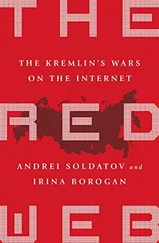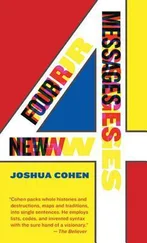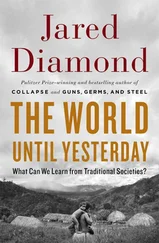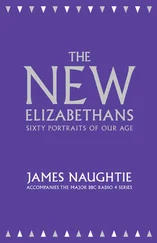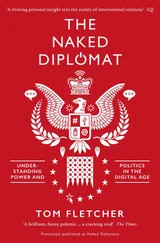Jared Cohen - The New Digital Age
Здесь есть возможность читать онлайн «Jared Cohen - The New Digital Age» весь текст электронной книги совершенно бесплатно (целиком полную версию без сокращений). В некоторых случаях можно слушать аудио, скачать через торрент в формате fb2 и присутствует краткое содержание. Жанр: Старинная литература, на английском языке. Описание произведения, (предисловие) а так же отзывы посетителей доступны на портале библиотеки ЛибКат.
- Название:The New Digital Age
- Автор:
- Жанр:
- Год:неизвестен
- ISBN:нет данных
- Рейтинг книги:5 / 5. Голосов: 1
-
Избранное:Добавить в избранное
- Отзывы:
-
Ваша оценка:
- 100
- 1
- 2
- 3
- 4
- 5
The New Digital Age: краткое содержание, описание и аннотация
Предлагаем к чтению аннотацию, описание, краткое содержание или предисловие (зависит от того, что написал сам автор книги «The New Digital Age»). Если вы не нашли необходимую информацию о книге — напишите в комментариях, мы постараемся отыскать её.
The New Digital Age — читать онлайн бесплатно полную книгу (весь текст) целиком
Ниже представлен текст книги, разбитый по страницам. Система сохранения места последней прочитанной страницы, позволяет с удобством читать онлайн бесплатно книгу «The New Digital Age», без необходимости каждый раз заново искать на чём Вы остановились. Поставьте закладку, и сможете в любой момент перейти на страницу, на которой закончили чтение.
Интервал:
Закладка:
In the end, like all bubbles, this one will burst, as processes become delayed and institutional donors lose faith in reconstruction efforts. When the dust settles, those organizations left standing will be well-positioned NGOs with a targeted focus, strong donor loyalty and the ability to demonstrate a history of efficient and transparent operations. Some will be established aid groups and others will be new, but they will share certain characteristics that make them well suited for reconstruction work in the digital age. They will run solid programs with data-generating results, and pair their efforts on the ground with savvy digital marketing that both showcases their work and allows for responsive feedback from donors and aid recipients alike. The appearance of accountability and transparency will count for a lot.
The trend toward more direct engagement between donors and recipients on the ground will survive as well. NGOs will adopt new methods that aim to satisfy the desire to provide more intimate relationships, and in doing so they will accelerate another long-term trend visible today: the decentralization of aid distribution. By this we mean the move away from several key nodes (a few large, institutional NGOs) to networks of smaller conduits. Rather than donating to the main office of the Red Cross or Save the Children, increasingly, informed and involved donors will seek out special and specific programs that speak to them directly, or they will take their donations to smaller start-up NGOs that promise equivalent services. Smart, established NGOs will astutely reshape their function to serve more as aggregators than top-down directors, reimagining their role as one of linking donors directly to the people they fund—providing the right personal “experience,” such as connecting doctors in a developed country with those in a country affected by an earthquake—while still retaining complete programmatic control. (To be sure, not all donors will seek such intimate knowledge of the organizations and individuals they support. For them, it will be easy enough to “opt out” of such engagement.)
And we cannot discount the role that individuals in countries suffering disasters or conflict will play in the newly digital aid ecosystem. Connectivity will influence how one of the biggest and most common problems that postcrisis societies face—internally displaced persons (IDPs)—will be helped. Little can be done by outsiders to prevent the conditions that lead to internal displacement within a country—war, famine, natural disaster. But mobile phones will change the future for their victims. Most dislocated people will own handsets, and if they do not (or if they have to leave them behind), relief organizations will distribute phones to them. Refugee camps will be wired with 4G hot spots that allow callers to communicate with each other easily and inexpensively, and with mobile phones, the registration of IDPs will never be easier.
Most IDPs and refugees say that among their greatest challenges is lack of information. They never know how long they’ll be in one place, when food will arrive or how to get some, where they can find firewood, water and health services, and what the security threats are. With registration and specialized platforms to address these concerns, IDPs will be able to receive alerts, navigate their new environment, and receive supplies and benefits from international aid organizations on the scene. Facial-recognition software will be heavily used to find lost or missing persons. With speech-recognition technology, illiterate users will be able to speak the names of relatives and the database will report if they are in the camp system. Online platforms and mobile phones will allow refugee camps to classify and organize their members according to their skills, backgrounds and interests. In today’s refugee camps, there are large numbers of people with relevant and needed skills (doctors, teachers, soccer coaches) whose participation is only leveraged in an ad hoc manner, mobilized slowly through word-of-mouth networks throughout the camps. IDPs in the future should have access to a skills-tracker app, through which they can submit their skills or search a database for what they need, leaving no skill unused or willing participant excluded.
Widespread use of mobile phones will present new opportunities for people looking to shake up the existing model of aid distribution. A few enterprising individuals with a bit of technical know-how will be able to build an open platform where potential aid recipients like themselves can list their needs and personal information, send it to the cloud and then wait for individual donors to select them and send aid directly. This is not unlike the platform that Kiva uses for micro-finance funding, except that it would be broader in scope, more personal in nature and focused on donations instead of loans. (Naturally, a platform like this would encounter a series of mechanical and legal issues that would need to be addressed before it functioned correctly.)
Now imagine if this platform partnered with a bigger organization that could promote it to a much wider audience around the world while providing some measure of verification to assuage skeptical users. In the West, a mother could take a break from watching her child’s soccer game to explore a live global map (interactive and constantly updated) on her iPad, displaying who needed what and where. She would be able to independently decide whom to fund on the basis of individuals’ stories or perceived need levels. Using mobile money-transfer systems already available, that mother could transfer cash or mobile credit to the recipients directly, as quickly and casually as sending a text message.
The challenge with this type of platform is that the onus of marketing falls directly on the aid recipients themselves. Life is hard enough in a refugee camp without having to worry if one’s online profile is sufficiently need-worthy, and the stark competition for resources that such a platform would cause recipients is distasteful in and of itself. There is also the risk of donors who lack good judgment or familiarity with the situation on the ground disproportionately supporting people who have the best marketing campaigns (or who have gamed the system) instead of those who need it most. The consequence of going around established aid organizations is the loss of those groups’ ability to discern levels of need and distribute their resources appropriately. With those controls gone, the free-for-all of direct donations would almost certainly lead to a less equitable division of those resources. An analysis of peer-to-peer lending through Kiva’s website conducted by researchers in Singapore reported that lenders tend to discriminate in favor of attractive, lighter-skinned and less obese borrowers.
Moreover, the emergence of a platform like this assumes that the desire for a closer connection is reciprocated. Aid recipients would have to want to engage in such a connection, and that would strike many who have worked in development as a nonstarter. To be sure, some people in postcrisis countries (as well as developing nations) might embrace the opportunity to directly market themselves if it meant a more reliable source of funding. But the majority will not. Unlike with Kiva, whose recipients are requesting loans, these recipients would be asking for charity—publicly. Pride is a universal human quality, and often when people have little else, they value their pride all the more. It’s hard to imagine that, even if such an open-funding platform were available to them, refugees, IDPs and other recipients would willingly advertise their needs to a global audience. One important function of established aid organizations is the distance they provide between recipients and their funders. So amid all of the changes we have described above—start-up NGOs, micro-targeted programs, decentralized aid—it is worth remembering the reasons certain aspects of the development-and-aid world are as they are, and why they work.
Читать дальшеИнтервал:
Закладка:
Похожие книги на «The New Digital Age»
Представляем Вашему вниманию похожие книги на «The New Digital Age» списком для выбора. Мы отобрали схожую по названию и смыслу литературу в надежде предоставить читателям больше вариантов отыскать новые, интересные, ещё непрочитанные произведения.
Обсуждение, отзывы о книге «The New Digital Age» и просто собственные мнения читателей. Оставьте ваши комментарии, напишите, что Вы думаете о произведении, его смысле или главных героях. Укажите что конкретно понравилось, а что нет, и почему Вы так считаете.

